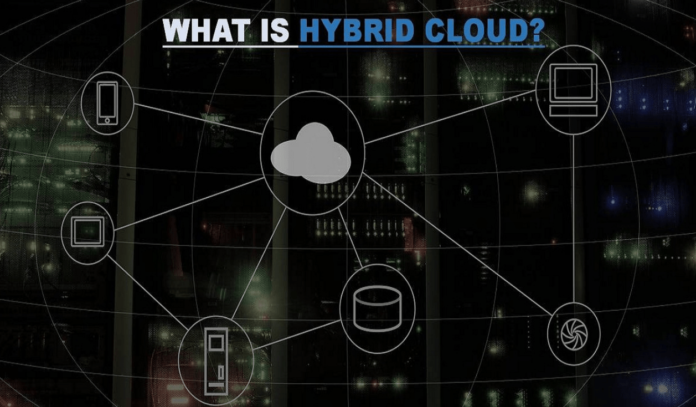Hybrid cloud is basically a solution which combines a public cloud with one or many private clouds, with the purpose of enabling better communication between them as required by the needs of each unique service. Hybrid cloud architecture also offers businesses greater flexibility, as individual cloud applications can be moved between different clouds as required and business costs change as per individual requirements. The advantages of using a hybrid cloud approach include:
Companies looking to implement a hybrid model can choose either an IaaS or SaaS model for their cloud infrastructure. IaaS is an application-as-a-service delivery model, in which an application is hosted on-demand using virtualization technologies and thus requires no initial purchasing of hardware. On the other hand, SaaS is a subscription-based hosting model, in which a user licenses computing resources through a subscription based model. These two delivery models are well suited for rapidly deploying applications. They are ideal for all types of businesses, from those that require a small amount of IT manpower to large enterprises, which can take advantage of the benefits of cloud computing more readily. Thus, a hybrid model suits a wide variety of organizations and businesses.
Virtualization technologies have made it possible to create a virtualized network, consisting of multiple servers, which can be provided by a single infrastructure. Thus, a great option is the use of this virtual networking infrastructure in a hosted environment. A great benefit of the virtual network is its cost effectiveness, as the IT costs involved are less than those of other computing environments. It also reduces the overall expenditure involved in deploying infrastructure for private and hybrid cloud data centers. However, this virtual network needs to be managed well, as without good management it can damage the business’s data.
Hybrid Cloud architecture has the following basic requirements. The virtualization technologies must ensure easy provisioning, easy deployment, high levels of performance, and fault tolerance. Also, the infrastructure used must be flexible to accommodate the different changes in workloads, which may occur due to expansion or changes in clientele. Data recovery in such situations is not possible, unless data centers are located in a region that is frequently affected by natural disasters. Another requirement of a hybrid cloud environment is security. The data center should have implemented the latest security measures to ensure maximum protection of confidential information.
In a hybrid cloud model, applications are hosted on a hardware platform independent from the user end. Platform independence simplifies deployment and reduces the learning curve. The hardware platform used is usually based on industry standards and helps to make deployment easy. It also reduces operational costs, which further increases the attractiveness of the hybrid cloud model. Users do not need to install any software on their own machines, which is quite a hassle and time consuming. They can deploy the applications using a web browser, as the software is already hosted on the relevant infrastructure.
In a hybrid cloud strategy, users have control over the maintenance and security of their infrastructure. The hybrid strategy of private clouds is suitable for businesses that want to reduce costs associated with purchasing and maintaining their own infrastructure. For small enterprises, it is quite affordable to implement a private cloud infrastructure. However, large businesses that invest in their own infrastructure rarely opt for a hybrid model. A major drawback of this hybrid model is its inability to provide a guaranteed level of service, even during extreme workloads.
Also Read: What is Data Center Technician? – Definition, Considerations, and More








